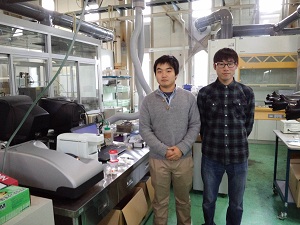Dr Kikuo Okuyama of the Department of Chemical Engineering at the Graduate School of Engineering, Hiroshima University in Japan, was the first customer to take delivery of a Zetasizer Nano ZSP, the new top-of-the-range dynamic light scattering system from Malvern Panalytical.

In Dr Okuyama’s work the objective is to find alternative materials for rare earths and to develop rare earth-free functional materials. This involves research into the composition and structure of functional fine particles and will use the Zetasizer Nano ZSP in the evaluation of nano particle size, dispersion and surface chemistry.
“Our existing Malvern Panalytical system for nanoparticle sizing was in frequent use, so we made the decision to buy an additional instrument,” said Dr Okuyama. The high sensitivity of the new Zetasizer Nano ZSP for zeta potential measurement was a deciding factor in our decision to purchase.”
“The Zetasizer Nano ZSP will be used for the evaluation of nano particle size, dispersion and surface chemistry. Size and zeta potential will be measured when particles are produced and the data will be used to confirm the effect of changes in the chemistry of particles,” continued Dr Okuyama. “Our main objective is to find alternative materials for rare earths and to develop rare earth-free functional materials for use in applications such as high performance motors, white LED, battery and photocatalyst materials.”
Like other systems in the Zetasizer range, the Zetasizer Nano ZSP is a single, compact unit. It shares the simplicity and ease of use that have made Zetasizer Nano systems a firm favourite in industry and academia for almost a decade. Where the Zetasizer Nano ZSP stands apart, however, is in its unique performance specifications for both size and zeta potential measurement.
It incorporates a two angle particle and molecular size analyzer for the enhanced detection of aggregates and measurement of small or dilute samples, and samples at very low or high concentration using dynamic light scattering with ‘NIBS’ optics. A zeta potential analyzer uses electrophoretic light scattering for particles, molecules and surfaces, and a molecular weight analyzer uses static light scattering.